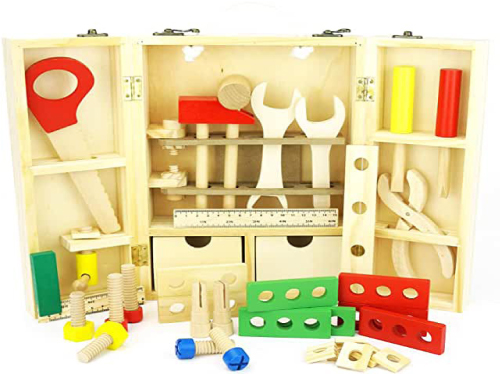Engage
Whole Group Activity
Day 1– Hold up two pieces of Spruce (included in the kit). Explain, “These wood pieces are from a spruce tree. I am going to soak one of the pieces in water and we’ll leave the other one out. Before we soak the wood lets record some measurements. First, let’s weigh the spruce” (take out the scale and weigh spruce) Circle the number and say it aloud on the hundreds chart. Write it down “This is how much the spruce weighs, how heavy it is.” Next, take the wood moister tester and insert probes into the wood. Read the number aloud. “This tool measures how much water is inside the spruce now”. Circle that number on the hundreds chart and write it down. “We will compare both of them throughout the week. What do you think might change in the wood that we soak into the water?” Listen and record predictions. Leave both pieces of wood in the classroom. Create a graph to record daily observations.
Explore:
Day 2 – Take out the piece of spruce that has been soaking overnight. Pass around for students to feel and compare the wood soaked and the wood that was left out. Ask “What is the same? What is different about the wood from yesterday?” “Let’s see if the numbers are the same as yesterday, what do you guys think?” (Listen to answers). Review numbers from yesterday on the hundreds chart regarding weight and moister content. Take out the scale, “Let’s weigh this wood piece.” Weigh wood piece and record answer. (Maybe record in a different color marker for easy visualization). Compare the numbers. Is it more or less? Next, take the moister tester and stick into the piece of wood that has been soaking in water. Tell students, “Yesterday when we used our moister tester it read ______(number) Let’s test it now to see what it is.” Take moister tester and stick the probe into the wood. Read the number and record on the hundreds chart. Compare. Is it the same? Different?
Explain
Talking, Niugtuk, Qalarte, Qenax
“Dry wood like this (Show spruce that is dry) is good for burning in the steam bath or in your home to keep you warm. See how it is lighter in color, lighter in weight and it is moister has a lower number? That means that it is good for fires.” “New wood or wood that has been exposed to a lot of water from rain or in the lake or rivers often soaks up a lot of water. It becomes heavy and has a lot of moister. This wood is hard to light and won’t burn very easily. It takes experience to learn by looking at wood if it is dry or wet. When you are outside see if you can tell if the wood is wet or dry. Ask someone you know that collects wood how they know if the wood is wet or dry. You can bring in pieces of wood for us to check with our moister tester.”


